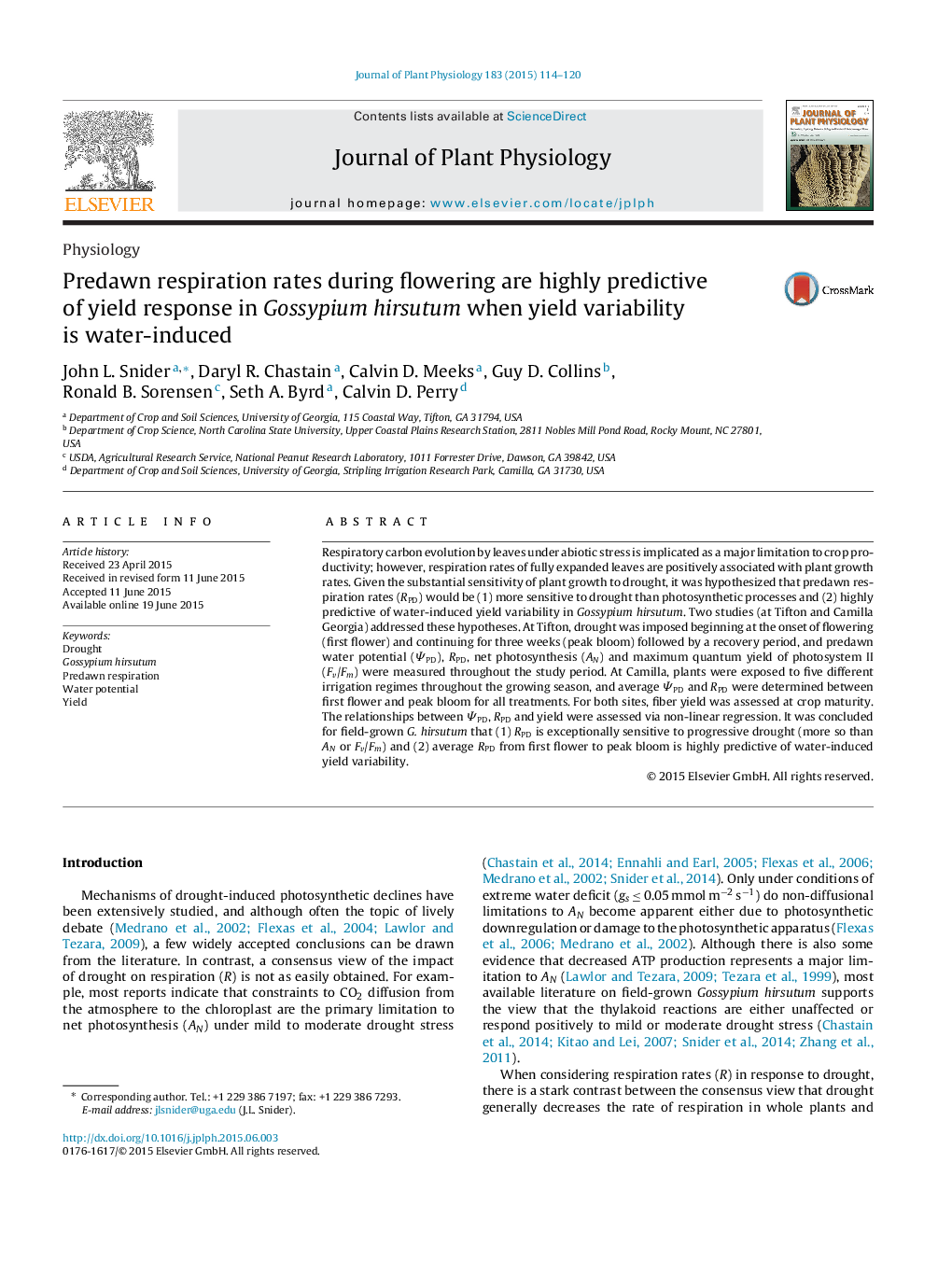| Article ID | Journal | Published Year | Pages | File Type |
|---|---|---|---|---|
| 8387407 | Journal of Plant Physiology | 2015 | 7 Pages |
Abstract
Respiratory carbon evolution by leaves under abiotic stress is implicated as a major limitation to crop productivity; however, respiration rates of fully expanded leaves are positively associated with plant growth rates. Given the substantial sensitivity of plant growth to drought, it was hypothesized that predawn respiration rates (RPD) would be (1) more sensitive to drought than photosynthetic processes and (2) highly predictive of water-induced yield variability in Gossypium hirsutum. Two studies (at Tifton and Camilla Georgia) addressed these hypotheses. At Tifton, drought was imposed beginning at the onset of flowering (first flower) and continuing for three weeks (peak bloom) followed by a recovery period, and predawn water potential (ΨPD), RPD, net photosynthesis (AN) and maximum quantum yield of photosystem II (Fv/Fm) were measured throughout the study period. At Camilla, plants were exposed to five different irrigation regimes throughout the growing season, and average ΨPD and RPD were determined between first flower and peak bloom for all treatments. For both sites, fiber yield was assessed at crop maturity. The relationships between ΨPD, RPD and yield were assessed via non-linear regression. It was concluded for field-grown G. hirsutum that (1) RPD is exceptionally sensitive to progressive drought (more so than AN or Fv/Fm) and (2) average RPD from first flower to peak bloom is highly predictive of water-induced yield variability.
Related Topics
Life Sciences
Agricultural and Biological Sciences
Agronomy and Crop Science
Authors
John L. Snider, Daryl R. Chastain, Calvin D. Meeks, Guy D. Collins, Ronald B. Sorensen, Seth A. Byrd, Calvin D. Perry,
